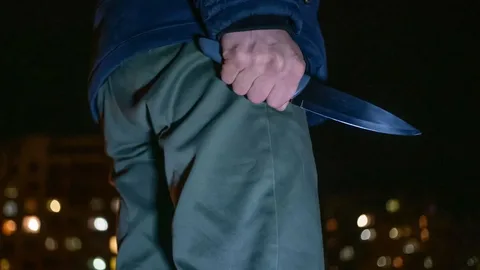The brutal 2008 murder of Travis Alexander shocked the nation and sparked a media firestorm, especially after the details of his relationship with Jodi Arias unraveled. Over a decade later, the case remains one of the most infamous in modern true-crime history. With sensational courtroom drama, claims of abuse, self-defense, and obsession, the trial gripped the public—and the autopsy findings revealed the horrifying extent of Alexander’s final moments.
This article explores who Travis Alexander was, how he died, and what the forensic evidence revealed about the nature of his death and his complex relationship with Jodi Arias.
The Life of Travis Alexander
Early Life and Upbringing
Travis Victor Alexander was born on July 28, 1977, in Riverside, California. He faced a turbulent childhood, marked by poverty and neglect. After the death of his father and his mother’s descent into drug addiction, Alexander and his siblings ended up in the care of their grandparents. His early life struggles helped shape a resilient, charismatic personality.
Career and Faith
Alexander was deeply involved with The Church of Jesus Christ of Latter-day Saints (LDS). His faith was a cornerstone of his identity, and he often spoke about overcoming adversity through spirituality. Professionally, he found success working as a motivational speaker and salesman for Pre-Paid Legal Services (now LegalShield). His energetic charisma and success drew many to him, both professionally and personally.
The Beginning of a Tragic Relationship
Meeting Jodi Arias
Travis met Jodi Arias at a work-related conference in Las Vegas in September 2006. She was striking and charming, and they quickly struck up a connection. Despite living in California while Alexander was in Mesa, Arizona, the two began dating not long after their initial meeting.
Alexander reportedly introduced Arias to the LDS Church, and she converted in November 2006, even undergoing baptism with him present. To friends, their relationship seemed passionate but chaotic from the start.
Red Flags and Toxic Dynamics
Though they dated officially for only five months, the relationship dragged on as an undefined, on-again-off-again entanglement for nearly two years. Alexander’s friends would later testify that Arias displayed obsessive behavior. She allegedly monitored his social interactions, appeared uninvited at his home, and even accessed his personal messages.
Friend Clancy Talbot recalled that Jodi “always had to sit by him” and seemed hostile toward other women who spoke to him. These warning signs became more pronounced after their official breakup.
The Move to Mesa
In an unsettling turn, Arias moved from Palm Desert, California, to Mesa, Arizona, shortly after the breakup. She stayed in Mesa for about eight months—longer than her relationship with Alexander—before returning to California in April 2008.
That move raised eyebrows. Friends and even Alexander himself reportedly expressed concern about her increasingly strange and possessive behavior.
The Days Leading Up to the Murder
A Fight and a Vacation Plan
By May 2008, the relationship had deteriorated further. Text messages recovered from Alexander’s phone revealed a heated exchange between him and Arias. He accused her of being a sociopath and labeled their relationship as toxic.
Despite this, some communication between the two continued. Travis was preparing for a trip to Cancun, Mexico, with a female friend—a trip that Arias was reportedly jealous about.
A Disappearance and a Gruesome Discovery
On June 9, 2008, Travis Alexander’s body was discovered by friends who had grown worried after not hearing from him for several days. The scene inside his Mesa home was horrifying.
Alexander was found dead in his shower, brutally murdered. There was blood throughout the bathroom, hallway, and bedroom. What investigators discovered next would point squarely at Jodi Arias.
The Crime Scene and Autopsy Results
What the Medical Examiner Found
Dr. Kevin Horn, the Maricopa County medical examiner, conducted the autopsy. His findings painted a deeply disturbing picture of Travis Alexander’s final moments. The autopsy revealed:
- A total of 27 to 29 stab wounds across his body, including defensive wounds on his hands.
- A deep throat wound—a massive slash from ear to ear that severed his carotid artery and windpipe.
- A gunshot wound to the head, specifically to the right temple, from a .25-caliber handgun.
Sequence of Injuries
The exact sequence of the injuries became a focal point during trial testimony. According to Dr. Horn’s expert opinion:
- The stab wounds likely came first, suggesting a frenzied and chaotic attack.
- The throat-slashing was fatal, consistent with the final blow.
- The gunshot wound appeared to be post-mortem, delivered after Alexander was already incapacitated or dead.
This forensic evidence undercut Arias’ claim of self-defense and suggested a prolonged, rage-fueled attack.
Time of Death and Scene Details
Dr. Horn and the investigators estimated Travis died on June 4, 2008, five days before his body was found. The state of decomposition aligned with this timeline.
The bathroom was a scene of carnage. Blood smeared the walls and floor, and bloody handprints were discovered. A camera found in the washing machine, though damaged by water, would prove to be a pivotal piece of evidence. Its recovered memory card showed photos of Travis alive, then of him bleeding—followed by images taken inadvertently during or after the attack.
The Evidence Linking Jodi Arias
Forensics and Photography
Investigators quickly zeroed in on Arias due to multiple factors
- The bloody handprint contained a mixture of both Alexander’s and Arias’ DNA.
- Photos on the camera placed her at the scene at the time of the murder.
- A .25-caliber bullet casing matched the caliber of a gun reported stolen from Arias’ grandparents’ home just days earlier.
Though she initially denied any involvement, Arias’ story would change multiple times.
Arias’ Changing Story
At first, Arias claimed she hadn’t seen Travis in months. Later, when confronted with photographic and forensic evidence, she said they had a romantic encounter on the day of his death, which ended when masked intruders broke in and attacked them. According to this version, she escaped while Alexander was killed.
Eventually, in court, Arias told a new story: she had killed Travis, but it was in self-defense. She claimed he became violent after she dropped his new camera and attacked her, prompting her to grab a gun and defend herself. However, she testified that she did not remember stabbing him or slitting his throat.
The Trial of Jodi Arias
The 2013 Conviction
After nearly five years of legal proceedings, Jodi Arias stood trial in 2013 for the murder of Travis Alexander. The prosecution argued that Arias’ actions were premeditated and driven by jealousy and rejection.
They emphasized
- Her obsessive behavior.
- Her lies to authorities.
- The overwhelming forensic evidence.
- The brutality of the attack.
The defense portrayed Alexander as emotionally and physically abusive, and Arias as a woman pushed to her limit. Despite her testimony and claims of abuse, the jury convicted her of first-degree murder.
The Sentencing Phase
During the penalty phase, the jury was tasked with deciding whether Arias should receive the death penalty. However, they could not reach a unanimous decision, resulting in a mistrial for that portion of the case.
In 2014, a second jury was also deadlocked on the sentencing. Ultimately, the judge handed down a sentence of life in prison without the possibility of parole, ending the long and tragic saga in court.
Media Coverage and Public Reaction
A True-Crime Sensation
The Arias trial attracted widespread media attention, with wall-to-wall coverage from major outlets. Programs such as Dateline NBC, 48 Hours, and 20/20 aired detailed features about the case. In 2018, the documentary series Jodi Arias: An American Murder Mystery revisited the events with interviews, reenactments, and fresh analysis.
The public was divided. Some sympathized with Arias’ abuse claims, while many others saw her as a manipulative and dangerous killer. The sheer brutality of the murder and the web of lies surrounding it left little room for ambiguity in many observers’ minds.
Where Is Jodi Arias Now?
Jodi Arias remains incarcerated at the Perryville State Women’s Prison in Goodyear, Arizona. She has maintained some presence through occasional interviews and statements from prison, where she has reportedly taken up art and attempted to appeal her conviction. To date, her appeals have been unsuccessful.
The Legacy of the Case
Travis Alexander Remembered
Friends and family remember Travis as an intelligent, kind, and driven individual. His tragic death and the spectacle of the trial often overshadow the full picture of who he was. In recent years, those close to him have worked to keep his memory alive through advocacy against domestic violence and speaking engagements.
A Cautionary Tale
The Arias case continues to serve as a chilling example of how toxic relationships can escalate into violence. It also highlights the role that media, obsession, and misinformation can play in high-profile trials.
Conclusion
Travis Alexander’s murder was not just a crime—it was a tragedy steeped in obsession, emotional instability, and ultimately, lethal violence. His autopsy revealed a horrifying story told through forensic evidence, unraveling the lies and exposing the truth behind his brutal death. Over a decade later, the memory of Travis lives on, while the case of Jodi Arias stands as a landmark in American criminal justice and media spectacle.
- Natural Lip Filler – Elegant Lip Enhancement & Subtle Lip Augmentation - December 19, 2025
- Lip Augmentation in London – Lip Filler London & Natural Lip Enhancement - December 16, 2025
- Bonnie Blue secretly filming huge C4 show which will reveal ‘what her life’s really like’ after 1,000 men sex stunt - June 5, 2025






